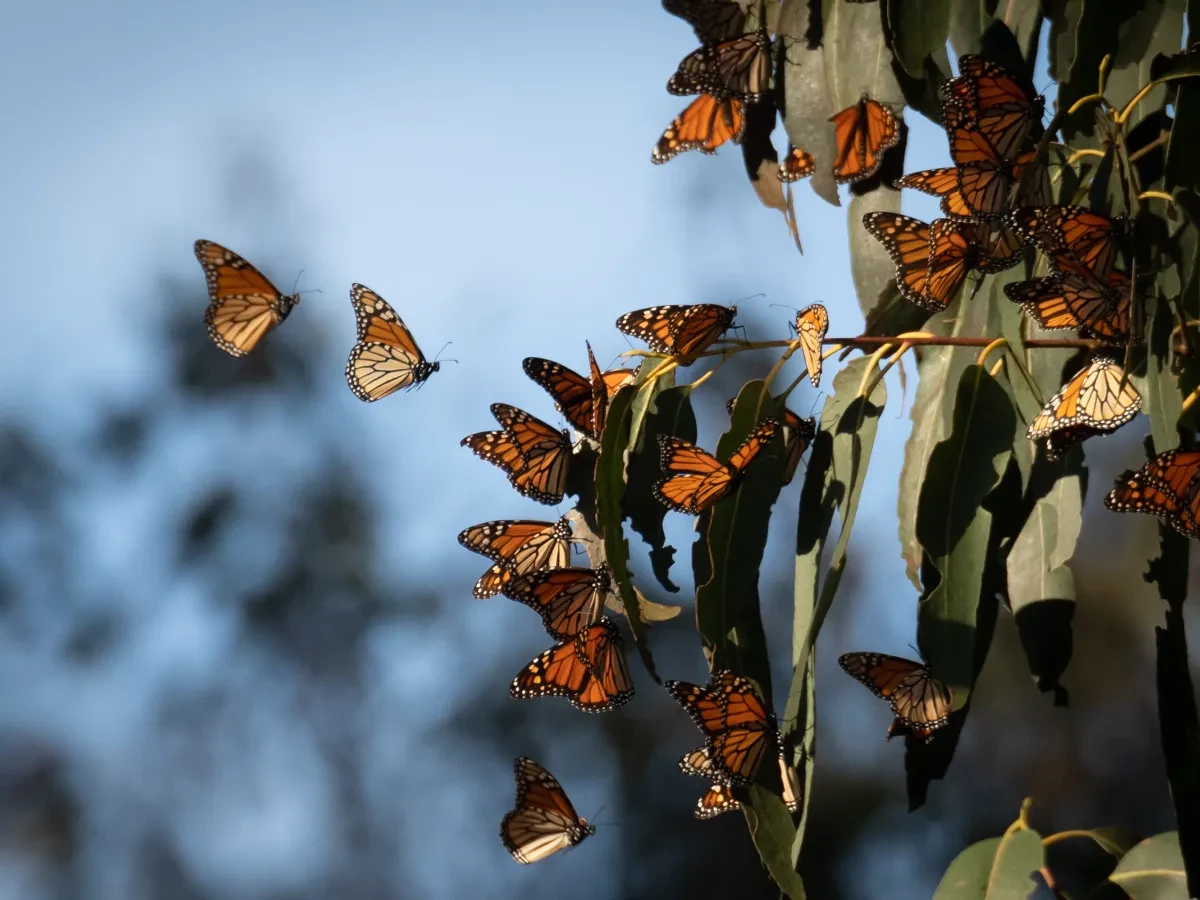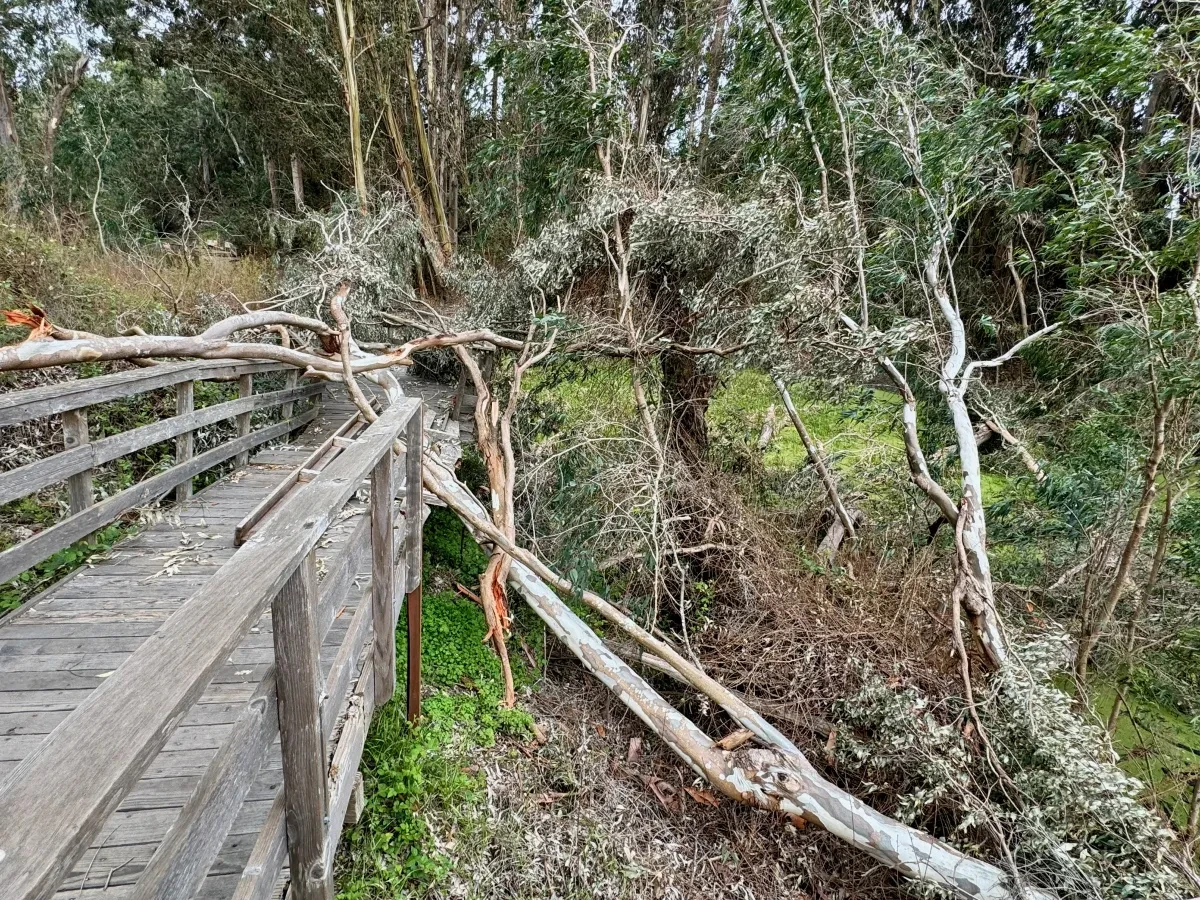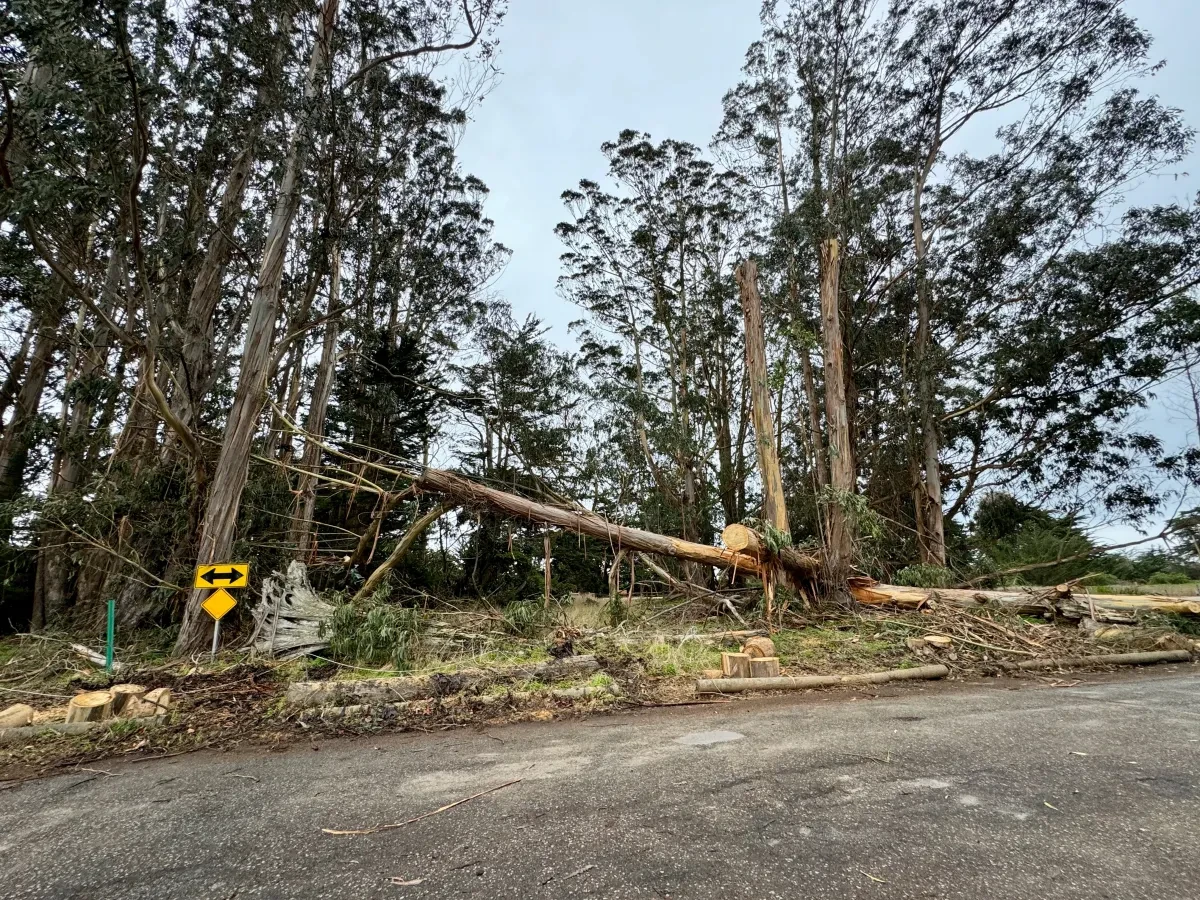Background
Every winter, western monarch butterflies return to the California coast to take shelter in overwintering groves. These unique sites provide the specific microclimate that monarchs need to survive the winter, including protection from the cold and wind, dappled sunlight, and access to water. As the monarch population hovers on the brink of collapse, restoring and stewarding this critical habitat is vital to ensure the iconic species’ survival, and California State Parks — the largest single manager of overwintering sites in the state — plays a central role.
With support from California State Parks Foundation, the agency developed overwintering grove management plans for Natural Bridges State Beach, Lighthouse Field State Beach, and Pismo State Beach, three of the most important western monarch overwintering sites in the state. These documents lay out an adaptive approach to maintaining healthy winter habitat, including guidance for tree planting, planting nectar plants, and anticipating climate impacts. As extreme climate events become more common, building resilient overwintering groves will become even more critical.
A new study at Natural Bridges State Beach and Lighthouse Field State Beach
In 2023, California State Parks Foundation granted $25,000 to Groundswell Coastal Ecology to survey and develop a restoration plan for Natural Bridges State Beach and Lighthouse Field State Beach overwintering groves — both of which were severely damaged during the unprecedented winter storms. Both sites were evaluated to document grove damage and identify priority actions within each grove’s management plan. The surveys had four key objectives:
- Count and map fallen trees, erosion, and damaged infrastructure
- Remove dead and fallen trees
- Develop a tree replanting plan
- Develop a plan to address flooding issues at Natural Bridges State Beach
Read on to learn more about the study’s findings and how it will help support climate-resilient overwintering groves.
Extreme storms caused extensive tree damage at both sites
Winter storms in 2023 and 2024 damaged important trees in overwintering groves at Natural Bridges State Beach and Lighthouse Field State Beach. The structure of overwintering groves is key for them to provide the conditions that monarchs need for the winter, and fallen trees can threaten the integrity of the grove. Overwintering sites typically include roost trees surrounded by a larger grove of trees and shrubs that serve as windbreakers. Roost trees must have a range of heights so that monarchs can cluster at different locations based on shifting temperatures and sunlight, and the tree canopy must admit sufficient light to allow for sunning while still protecting the grove from strong winds. Therefore, identifying and mapping downed trees in Natural Bridges State Beach and Lighthouse Field State Beach is a critical step to identify necessary actions to restore grove integrity.
At both state beaches, central grove and windbreaker trees were damaged, impacting the microclimate of the grove. At Lighthouse Field State Beach, a central clustering tree was downed as well as adjacent trees that previously provided protection for the central grove. The Natural Bridges State Beach overwintering grove experienced significant tree fall around a pond due to heavy rain and soil saturation, which caused increased erosion and flooding. Interestingly, fallen trees included those that were previously planted to protect the grove, signaling that strategic planting requires considering not just location but also the ability for long-term sustainability. Groundswell Coastal Ecology worked with and advised California State Parks on how to clear downed and/or hazardous trees at both sites.
How do these critical monarch groves recover?
Groundswell Coastal Ecology used their survey results to make recommendations about grove recovery. This included developing a tree replanting plan and a watercourse maintenance and enhancement plan to address the flooding documented at Natural Bridges State Beach. Each of these plans reflect key actions already identified within the overwintering grove management plans for Natural Bridges State Beach and Lighthouse Field State Beach — highlighting the importance of developing such plans to inform and shape grove stewardship. Here are some of the key actions that Groundswell Coastal Ecology identified:
Tree Planting Plan
- Evaluating and strategically removing trees — Forestry crews should regularly evaluate tree health and density, enabling the removal of disease-prone trees or trees that are competing for resources or otherwise impeding mature tree growth.
- Planting native species — Grove trees are typically nonnative blue gum eucalyptus, but native species like Monterey pine, coast live oak, and California buckeye are also suitable. To preserve the biodiversity that makes California so unique, future planting should solely include native species. Fallen trees should be replanted if the site is able to support large trees in the long term.
- Reducing fuels on the ground — Fuels reduction projects like low-intensity burns can spur eucalyptus propagation, support a tree canopy that provides shelter from the wind and cold, and reduce the risk of fire.
Watercourse Maintenance and Enhancement Plan
- Managing sediment — Ensure sediment is not blocking key drainage locations and remove built-up sediment in the creek.
- Evaluating the effects of sea level rise — Consider how accelerating sea level rise and increasingly intense storms could affect the grove, including sea water intrusion in the lower grove and the necessity of moving facilities inland.
- Building resilient infrastructure — Determine if and how infrastructure will withstand increasing rains, including considering replacing the aging boardwalk.
The work continues!
The surveys at Natural Bridges State Beach and Lighthouse Field State Beach show the drastic consequences that climate change could have on California’s monarch groves. Rising sea levels, extreme storms, and the threat of fire in groves continue to loom on the horizon and must be addressed before it is too late.
The work of Groundswell Coastal Ecology shows us that the development of overwintering grove management plans is a key step to meeting these growing challenges. Some of their suggested actions have already begun. For example, Groundswell Coastal Ecology has worked with California State Parks and California Conservation Corps to remove hazardous trees. California State Parks is also currently repairing damaged infrastructure that was identified in the initial grove assessments.
However, further work is needed to restore these important overwintering groves. Having completed these vital assessments and recovery plans, Groundswell Coastal Ecology will provide critical advice and guidance as California State Parks continues restoration and stewardship projects. This result shows the impact of California State Parks Foundation’s grant program and the need for ongoing support of monarch conservation projects.
California State Parks Foundation is continuing to fight for western monarchs by supporting the implementation of overwintering grove management plans at sites around the state. To read more about this work, see our blog about an upcoming project at another important overwintering site, Pismo State Beach!


